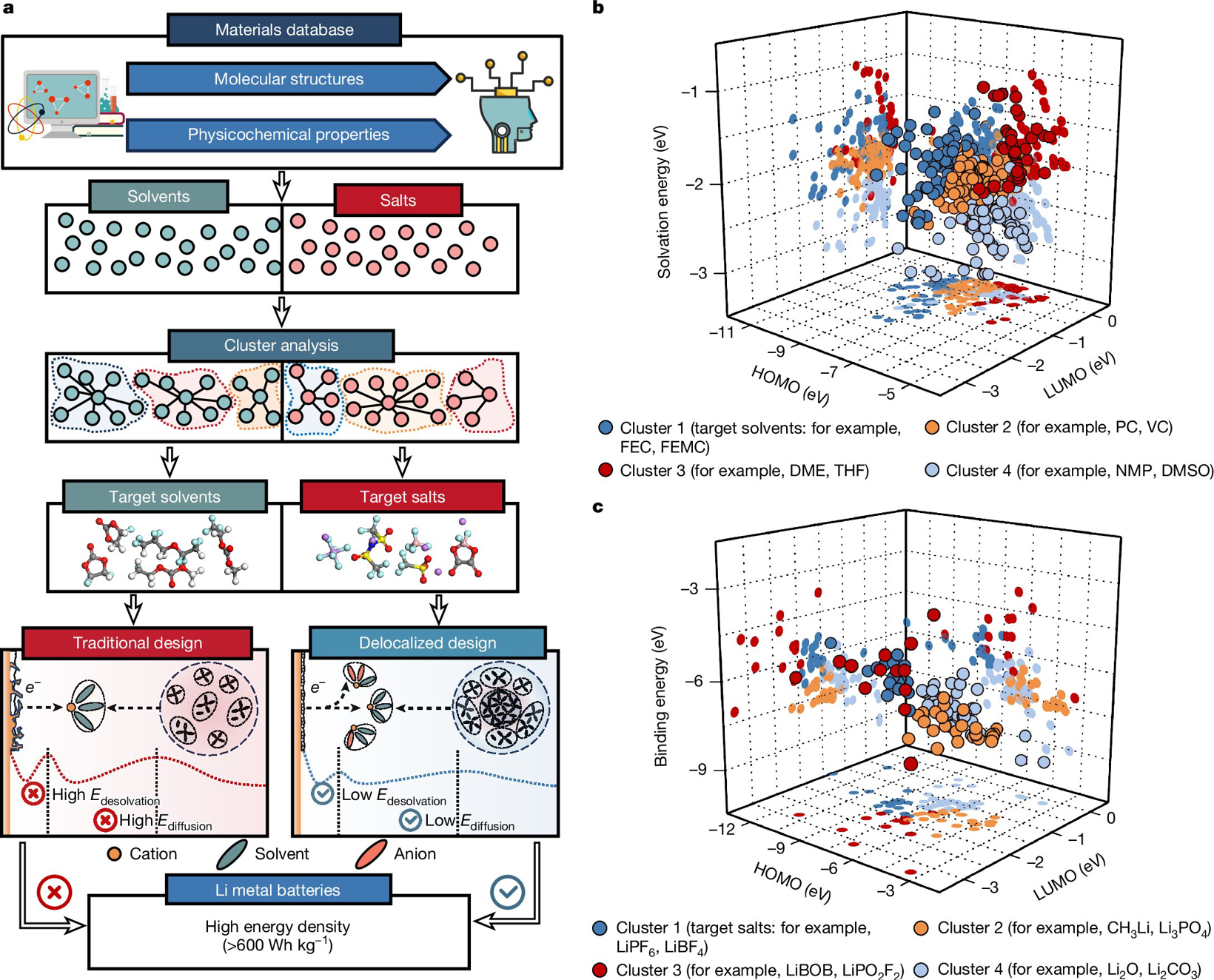China Researchers Achieve Battery Breakthrough That Could Transform Electric Vehicle Performance and Range
Lithium batteries are a key component of electric vehicles. Their high energy density enables them to store a large amount of energy in a relatively compact and lightweight package. This is crucial for achieving long driving ranges on a single charge.

Image source: Nature journal
According to foreign media reports, Chinese researchers have announced a major breakthrough in lithium battery technology, doubling the energy density (the amount of energy a battery can store relative to its size and weight) of Tesla's most advanced battery.
Currently, Tesla's best battery energy density is about 300 watt-hours per kilogram, while researchers at Tianjin University have developed a battery with an energy density exceeding 600 watt-hours per kilogram. The higher the energy density, the smaller the battery volume and the lighter the weight, which ultimately can improve the vehicle's driving range and performance.
A current problem faced by lithium batteries lies in their internal liquid, the electrolyte, through which lithium ions move. The issue is that since each lithium ion is surrounded by other lithium ions, the electrolyte can become "clogged," forming a rigid, ordered structure that limits the battery's efficiency, stability, and performance.
Chinese researchers published related research results in the journal Nature, describing a novel solution. They created a new type of electrolyte with a more disordered structure, allowing ions to move more freely.
The researchers wrote: "The design of delocalized electrolytes effectively reduces dynamic barriers by inducing a highly disordered solvation microenvironment, stabilizes the interphase, and provides great potential for transformative advancements in battery performance, thereby overcoming the inherent limitations of traditional electrolytes."
When they tested the new battery, it achieved an impressive energy density of 604.2 Wh/kg. It also remained stable over more than 100 charge and discharge cycles. Additionally, the electrolyte does not catch fire under an open flame and can operate normally at -60°C without freezing.
Currently, the battery is at the proof-of-concept stage and is not yet ready for mass production. Although it has demonstrated good performance under controlled laboratory conditions, its performance and safety still need to be extensively tested in practical applications.
If this new type of battery can eventually be mass-produced, its potential will be immense. Lighter and longer-lasting electric vehicle batteries will significantly enhance driving range and reduce charging time. Beyond electric vehicles, it also has other applications, such as improving energy storage performance for renewable energy grids and creating safer, higher-capacity batteries for various consumer electronics.
【Copyright and Disclaimer】The above information is collected and organized by PlastMatch. The copyright belongs to the original author. This article is reprinted for the purpose of providing more information, and it does not imply that PlastMatch endorses the views expressed in the article or guarantees its accuracy. If there are any errors in the source attribution or if your legitimate rights have been infringed, please contact us, and we will promptly correct or remove the content. If other media, websites, or individuals use the aforementioned content, they must clearly indicate the original source and origin of the work and assume legal responsibility on their own.
Most Popular
-

EVA Morning Prices on September 12: Most of the Market Holds Steady, Highest Rise of 50 Yuan
-

Domo Chemicals Files for Bankruptcy Protection in Germany! B. Braun Launches New Supply Assurance Program
-

Vynova's UK Chlor-Alkali Business Enters Bankruptcy Administration!
-

[PET Weekly Outlook] Polyester Bottle Chips Expected to Oscillate and Warm Up with Costs Today
-

Case Study | Clariant AddWorks™ Additives Solve Plastic Yellowing Problem






